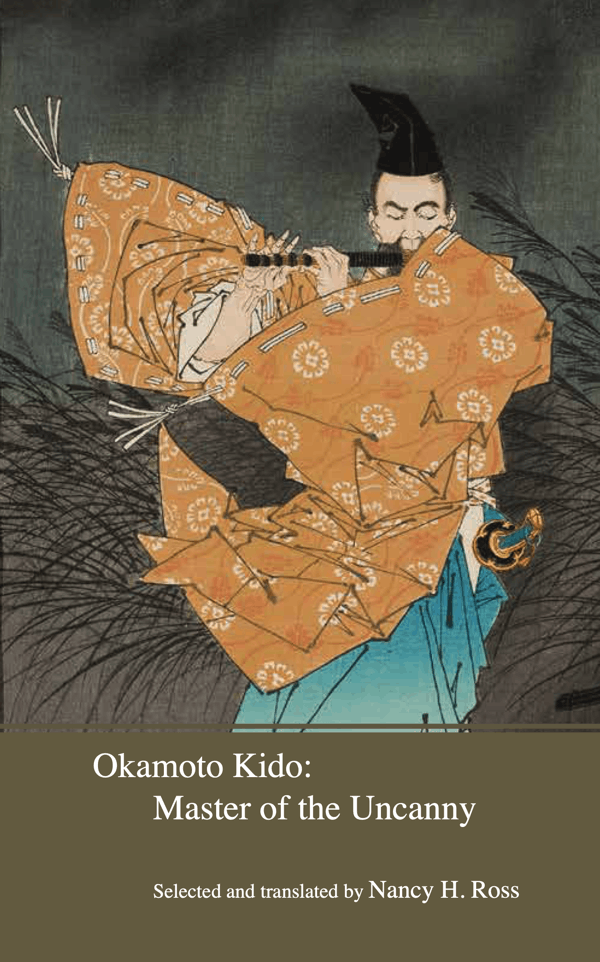 translated from the Japanese by Nancy H. Ross
translated from the Japanese by Nancy H. Ross
October 10, 2020
168 pages
grab a copy here or through your local independent bookstore
Kurodahan Press has once again brought Anglophone readers a gem of a book. These short stories, written in the 1920s and 30s by “one of the founders of the weird tradition in Japanese literature” (cover copy), are quietly and uniquely creepy. As editor Edward Lipsett notes in his introduction, Okamoto Kidō was the son of a low-ranking samurai who had to find other employment after the Meiji Restoration (1868). When his father went to work for the British legation as an interpreter, Kidō was introduced to Shakespeare and other Western literature. He would go on to be a newspaper reporter and a playwright, and familiarized himself with Edo-era folklore (1603-1868). As Lipsett explains, “Japanese horror was transitioning from the traditional uncanny stories to more modern horror structures during Okamoto Kidō’s life, and his work holds a pivotal position within the genre…and produced a dazzling array of work covering the entire spectrum from time-honored ghost tropes to modern horror.”
Some of these stories feature samurai who have lost their jobs (thus becoming “ronin”), like Kidō’s own father. In “Tone Crossing,” set in the early 18th century, a mysterious blind man waits on the bank of the Tone River every day for several years, asking ferry passengers if they know of a certain samurai lord named Nomura Hikoemon. Eventually, a ferryman befriends the blind man and learns his tragic story. The ending tells of a series of strange and inexplicable events that leave the reader wanting to know more. Similarly, “The One-Legged Woman” features a samurai who has fallen from his high position and runs off with a beggar (named O-Fuyu) whom he and his wife had rescued. Eventually, the former samurai realizes that O-Fuyu has (via a spell?) turned him into her blood supplier because…she’s a vampire?
Each of these stories advance slowly and carefully, giving up very few clues until the end, when they offer more questions than answers. In “The Monkey’s Eyes” and “Crabs,” the protagonists acquire food or antiques that turn out to be cursed or poisonous, though the individuals they bought them from cannot be found (and were actually spirits?). Musical instruments and eels hold curses (“Here Lies a Flute,” “The Man Cursed by an Eel”), while ghosts wander freely through towns and the countryside, haunting their killers (“The Kiso Traveler”) or taking revenge for unrequited love.
These are stories of the uncanny and the weird, and some include characters who openly mock the idea that spirits or curses are real. Nonetheless, Kidō succeeds in making us wonder just what might be possible, and makes us glance over our shoulders, just in case.

1 comment on “Review: Okamoto Kidō: Master of the Uncanny”